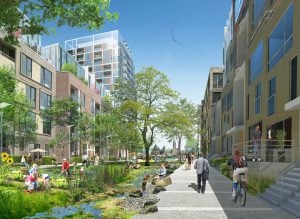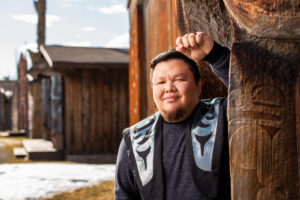
People & Culture
Q&A with Jeff Westeinde on Ottawa’s Zibi project
In the April issue of Canadian Geographic I wrote about Stratford, Ont.'s three decade struggle to repurpose the giant, neglected railway…
- 5118 words
- 21 minutes
Travel
Discover the “Paris of South America” on our ultimate walking tour of Recoleta and Retiro

Buenos Aires has a wonderful tourist bus system, but the vibrant street culture and mix of architectural styles that have earned the city the moniker “Paris of South America” are best appreciated on foot. Lace up your walking shoes and follow our suggested route to some of the highlights of posh Recoleta and bustling Retiro.
These downtown neighbourhoods contain some of the city’s most important historical, cultural and political landmarks. As you make your way between them, keep your eye and camera out for dog walkers surrounded by clouds of canine pals, colourful street art — usually political in nature — and shop windows, newsstands and buses hand-painted in the ornate fileteado style, considered an intangible cultural heritage by UNESCO. Fileteado also served as the inspiration for Jacqui Oakley’s gorgeous illustrated map of the city below, which you can use to plan out your route.
Summers in Buenos Aires (January to March) are hot and humid, and porteños (as citizens of Buenos Aires city are known) flee to beach resorts on the Atlantic coast. Visit in springtime (October to December) to enjoy milder weather, perfect for long, leisurely strolls down the city’s tree-lined avenues. The blossoming of the jacaranda trees in early November creates a canopy of vivid purple over the streets and parks and is worth timing your visit to see.


This intriguing brutalist structure, designed in 1961 by noted Argentine architects Clorindo Testa, Francisco Bullrich and Alicia Cazzaniga, dominates the streetscape in several directions, making it a good reference point for your explorations around Recoleta. The library also often hosts exhibitions of art or notable works in its collection, so be sure to check their website (in Spanish only) for what’s on during your stay. The site itself is loaded with historical significance: Unzué Palace, the official residence of former president Juan Perón and his wife Eva Perón, once stood on the spot, but was demolished in 1955 following the coup that ousted Perón from power. A monument to Evita can be found in the plaza behind the library, facing the busy main thoroughfare of Avenida del Libertador.

Designed by Argentine architect Eduardo Catalano as a gift to the city of Buenos Aires, the impressive steel and aluminum “Floralis Genérica” sits in a reflecting pool in the United Nations Plaza, next to the University of Buenos Aires’ Law Faculty building. The kinetic sculpture represents the hope and possibilities that accompany each new day; the enormous petals open every morning at dawn and close at sundown. A tip for pedestrians: the Law Faculty footbridge will see you safely across the busy, four-lane Avenida Presidente Figueroa Alcorte.
There are many wonderful museums in which to pass an afternoon in Buenos Aires, but the fine arts museum — easily identifiable by its coral pink exterior — is worth a visit for its vast permanent collection of masterworks from the 19th and 20th centuries by both European and Argentine artists. The museum also regularly changes up its roster of temporary and visiting exhibitions, so be sure to check the website to see what’s on during your stay.

She was born in poverty in rural Argentina; she died a hero of the working classes. Tributes and memorials to Eva Perón — affectionately known as “Evita” — are everywhere in Buenos Aires, but one of the most touching is the Duarte family mausoleum, where the populist icon’s remains were finally laid to rest in 1976, more than 20 years after her death. The story of what happened in the intervening decades makes for dramatic reading and helps to explain why Argentines still make a point of visiting the quiet Recoleta cemetery to leave flowers for their Evita.
More Evita
If your only exposure to Eva Perón’s story has been the movie musical starring Madonna, plan a visit to Buenos Aires’ Evita Museum (Lafinur 2988). Tucked away on a quiet street near the Carlos Thays Botanical Garden, the former private mansion, which was acquired by Evita’s charitable foundation in 1948 to serve as a temporary shelter for homeless women and children, today offers visitors a walk through Evita’s life, from her career in film and radio, to her marriage to Juan Perón and first steps into politics, to her death from cancer at the age of just 33.

Bibliophiles will not want to miss this palatial bookstore housed inside the former Grand Splendid Theatre. The interior of the 1919 building has been lovingly restored, from the trimmings on the balconies and private boxes to the plush red curtain framing the stage. Sit and enjoy a coffee and a book on the stage where tango legends such as Carlos Gardel and Francisco Canaro once performed.

Guided tours of this spectacular opera house, completed in 1908, are offered daily from 9 a.m. to 5 p.m. but fill up quickly, so it’s a good idea to book in advance. Highlights of the tour include the busts of famous composers that loom above the entrance doors to the auditorium, the aptly-named Golden Hall, where the upper classes mingled before and after performances and to which a knowledge of French was a requirement of entry, and the auditorium itself, with its five illuminated balconies rising to a soaring frescoed ceiling. Of course, the best way to experience the latter and its world-famous acoustics is to take in a performance. Ultra-affordable tickets can be scored last minute — if you’re willing to stand or forego a view of the stage.

Nowadays it seems like every city has its own giant name sculpture designed with Instagram in mind, but Buenos Aires took theirs a step beyond by making it a living vertical garden. For a fee, enterprising photographers onsite will help you stage your perfect shot right in front of the sculpture, but step a few feet to the right or left and you should be able to snap a decent pic for the folks back home without waiting in line. Completing the scene is the Obelisk of Buenos Aires, a national historic monument erected in 1936 to commemorate the 400th anniversary of the first founding of the city.

Set back at the eastern end of the sprawling Plaza de Mayo, the Casa Rosada (literally, “pink house”), Argentina’s presidential palace, is one of Buenos Aires’ most iconic buildings. It owes its rosy hue to former Argentine president Domingo Sarmiento, who in an effort to defuse political tensions in the mid-19th century is reported to have ordered the building painted pink, representing a mix of the colours of the country’s two leading political parties. In the 40s and early 50s, Juan and Eva Perón were known to address crowds of their supporters from the balcony of the palace, and in 1996, the makers of Evita obtained the government’s permission to film the musical’s smash hit number, “Don’t Cry for Me, Argentina,” on location.
Alexandra Pope (@XelaEpop) is Canadian Geographic Travel‘s digital editor. Jacqui Oakley (@JacquiOakley) is an illustrator whose previous work for the magazine was rendering the fictional world of a post-embargo Havana in La nueva Cuba.
Are you passionate about Canadian geography?
You can support Canadian Geographic in 3 ways:

People & Culture
In the April issue of Canadian Geographic I wrote about Stratford, Ont.'s three decade struggle to repurpose the giant, neglected railway…

Science & Tech
As climate change accelerates Arctic melt, the ice is offering up its secrets

People & Culture
How Hetxw’ms Gyetxw (Brett D. Huson) weaves together Gitxsan ways of knowing into his series of children’s books

Science & Tech
Comment l’évolution de la glace de mer dans l’Arctique affecte-t-elle le bien-être des ours polaires? Ce n’est qu’une des nombreuses questions auxquelles le biologiste…